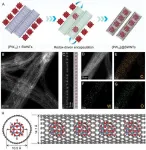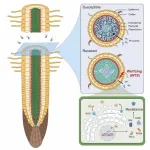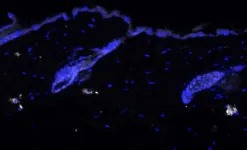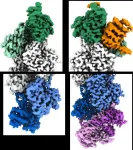Scientists map complete genome of millet
New knowledge of ancient grain may enable breeding for climate change adaptation
2023-06-08
(Press-News.org) An international team of researchers has unlocked a large-scale genomic analysis of Setaria or foxtail millet, an important cereal crop. The study, led by researchers at the Chinese Academy of Agricultural Sciences and including scientists at NYU, advances our understanding of the domestication and evolution of foxtail millet, as well as the genetic basis for important agricultural traits.
“Foxtail millet is considered to be the foundation for early Chinese civilization,” said Michael Purugganan, the Silver Professor of Biology at NYU and NYU Abu Dhabi, and the study’s co-senior author. “Moreover, because it is a crop that can grow across a wide range of environments—including arid lands—it has the potential to be important for food security under climate change.”
Foxtail millet is one of the oldest domesticated grain crops in the world and has been grown by humans for roughly 11,000 years. It held a dominant position in Chinese agriculture before the introduction of high-input agricultural practices like irrigation and chemical fertilizers. The protein-rich grain—which employs C4 photosynthesis, a highly efficient form of photosynthesis that helps it adapt to different environments—is resilient to drought and able to thrive in low-nutrient soils.
“C4 plants constitute only about 3% of flowering plant species, but they surprisingly contribute to approximately 25-30% of global biomass production. The complexity of the genomes of most C4 species has posed challenges for fundamental studies and breeding, but Setaria serves as an ideal model system for studying C4 photosynthetic plants in genomics and genetics research,” said Xianmin Diao, a professor in the Institute of Crop Sciences at the Chinese Academy of Agricultural Sciences, the study’s co-senior author, and the scientist who organized the study.
In their study published in the journal Nature Genetics, the researchers established the Setaria pan-genome—the entire set of the species’ genes—by assembling 110 representative genomes from a worldwide collection of 1,844 Setaria species. They performed large-scale genetic studies for 68 traits across 22 environments in 13 geographical locations, each with distinct climactic conditions, identifying potential genes and marker-panels for how foxtail millet has evolved and improved at different geographic sites. For instance, the researchers found that the gene SiGW3 regulates grain yield of foxtail millet.
They also constructed the first graph-based genome sequence of Setaria, offering insights into genomic variation across wild and cultivated Setaria. This deeper understanding of the comprehensive genomic variation equips researchers with valuable genetic tools to pursue biological research and breeding efforts.
“This paper is a significant milestone, as it paves the way for the next generation of comparative genomics studies that can help to decipher the molecular mechanism of C4 photosynthesis. The large-scale comparative genomics, genome-wide association study, and genomic selection studies of Setaria not only provide opportunities for gene discovery and breeding advancements in foxtail millet itself, but also offer insights for other crops to enhance global food security,” added Diao.
“Understanding the genetic basis underlying the domestication and improvement of foxtail millet, along with these important agricultural characteristics, holds significant potential for its enhancement. With our graph-based genome, we can estimate grain quality-related traits and potential yield, providing avenues for foxtail millet breeding for climate change adaptation,” said Qiang He, a postdoctoral researcher in the Institute of Crop Sciences at the Chinese Academy of Agricultural Sciences and the study’s first author.
Purugganan’s research was supported by grants from the National Science Foundation Plant Genome Research Program (IOS-1546218 and 2204374), the Zegar Family Foundation, and the NYU Abu Dhabi Research Institute.
END
ELSE PRESS RELEASES FROM THIS DATE:
2023-06-08
New York, NY—June 8, 2023—Energy storage plays a crucial role in our transition to cleaner and more sustainable energy sources. It enables us to store excess energy when it’s available, from renewable sources like wind and solar, and use it when demand is high or supply is limited. This helps stabilize the grid, reduces reliance on fossil fuels, and mitigates the impact of intermittent energy sources.
Balancing consumer demands with power system capacities
In many parts of the ...
2023-06-08
A study of the DNA of more than 55,000 people worldwide has shed light on how we maintain healthy blood sugar levels after we have eaten, with implications for our understanding of how the process goes wrong in type 2 diabetes.
The findings, published today in Nature Genetics, could help inform future treatments of type 2 diabetes, which affects around 4 million people in the UK and over 460 million people worldwide.
Several factors contribute to an increased risk of type 2 diabetes, such as older age, being overweight or having obesity, physical inactivity, and genetic predisposition. If untreated, type 2 diabetes can lead to complications, including eye and foot problems, ...
2023-06-08
Carbon nanotubes (CNTs) are considered ideal electrochemical energy storage materials due to their high electrical conductivity, large theoretical surface area, and good chemical stability.
However, CNTs tend to aggregate due to strong van der Waals forces, which reduces their electrochemically active area. This problem is even worse for single-walled carbon nanotubes (SWNTs) due to their high length-to-diameter ratio.
Recently, a joint research team led by Dr. WANG Xiao from the Shenzhen Institute of Advanced Technology (SIAT) of the Chinese ...
2023-06-08
Cephalopods are a large family of marine animals that includes octopuses, cuttlefish and squid. They live in every ocean, from warm, shallow tropical waters to near-freezing, abyssal depths. More remarkably, report two scientists at University of California San Diego in a new study, at least some cephalopods possess the ability to recode protein motors within cells to adapt “on the fly” to different water temperatures.
Writing in the June 8, 2023 edition of Cell, first author Kavita J. Rangan, ...
2023-06-08
Prostate cancer is the most common non-skin cancer in men worldwide. According to international estimates about one in six men will get prostate cancer during their lifetime and worldwide, over 375’000 patients will die from it each year. Tumor resistance to current therapies plays an essential role in this and new approaches are therefore urgently needed. Now an international research team from the University of Bern, Inselspital Bern and the University of Connecticut (USA) has identified a previously unknown weak spot in prostate cancer ...
2023-06-08
June 8, 2023 — Showing people how their behavior compares to their peers is a commonly used method to improve behavior. But in the wake of a global pandemic that exacerbated health care providers’ job dissatisfaction and burnout, questions remain about the potentially negative effects of peer comparison on the well-being of clinicians.
A new study from the USC Schaeffer Center for Health Policy & Economics reveals fresh insights into the relationship between peer comparison and job satisfaction among clinicians. Published in JAMA Network Open, the study challenges prior findings that such feedback increases job dissatisfaction and burnout.
Researchers ...
2023-06-08
Researchers led by CHEN Yuhang and ZHOU Jianmin from the Institute of Genetics and Developmental Biology of the Chinese Academy of Sciences have shown how plants resist clubroot, a major root disease that threatens the productivity of Brassica crops such as rape.
The study, which uncovers novel mechanisms underlying plant immunity and promises a new avenue for crop breeding, was published in Cell.
Clubroot, a soil-borne disease, is the most devastating disease of Brassica crops. In China, approximately 3.2–4 million hm2 of agricultural land is affected by clubroot each year, resulting in a 20%–30% yield ...
2023-06-08
A team of researchers from IRB Barcelona and CNAG identifies the IL-17 protein as a determining factor in skin ageing.
Blocking the function of IL-17 reduces the pro-inflammatory state and delays the appearance of age-related features in the skin.
Published in the journal Nature Aging, the work opens up new perspectives in the development of therapies to improve skin ageing health.
A team of scientists from the Institute for Research in Biomedicine (IRB Barcelona) in collaboration with the National ...
2023-06-08
Each year, about 200,000 people in the United States are diagnosed with a bulge in the lower part of the aorta, the main artery in the body, called an abdominal aortic aneurysm (AAA).
New research from the University of Cincinnati examines the role a particular metabolite plays in the development of AAA and could lead to the first treatment of the condition.
The research was published in the journal Circulation.
“We started the study by examining whether AAA patients themselves had an increase in trimethylamine N-oxide (TMAO). We examined an American and Swedish ...
2023-06-08
Actin filaments — protein structures critical to living movement from single cells to animals — have long been known to have polarity associated with their physical characteristics, with growing “barbed” and shrinking “pointed” ends. The ends of the filament are also different in the way they interact with other proteins in cells. However, the mechanism that determines these differences has never been entirely clear to scientists. Now, researchers from the Perelman School of Medicine at the University of Pennsylvania have revealed key atomic structures of ...
LAST 30 PRESS RELEASES:
[Press-News.org] Scientists map complete genome of millet
New knowledge of ancient grain may enable breeding for climate change adaptation





